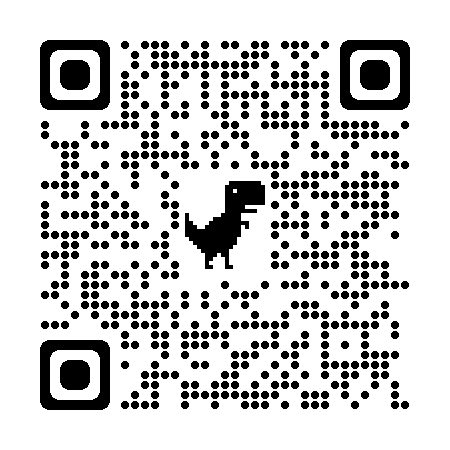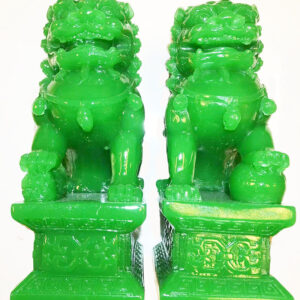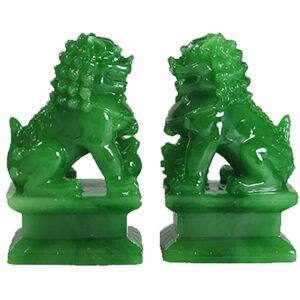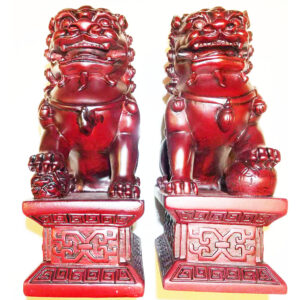The Chinese auspicious animal known as the “fu dog,” also referred to as a “foo dog” or “Chinese guardian lion,” is a mythical creature that holds significant cultural and symbolic meaning in Chinese culture. Despite the name “dog,” it actually represents a lion-like creature rather than a canine.
The fu dog is often depicted as a powerful and majestic creature with the body of a lion and various embellishments, such as a flowing mane, bushy tail, and sometimes wings. They are usually depicted in pairs, with one male and one female, and are commonly seen guarding entrances or important structures such as temples, palaces, and tombs.
The symbolism of the fu dog is rooted in ancient Chinese folklore and mythology, where it is believed to possess protective and auspicious qualities. The presence of fu dogs is thought to ward off evil spirits, bring good luck, and protect against negative energies. They are seen as guardians of homes and institutions, symbolizing power, strength, and prosperity.
The male fu dog, known as “qilin,” often has a ball or orb under its paw, representing the world or the unity of yin and yang. The female fu dog, called “mao,” is often depicted with a cub, symbolizing nurturing and protection.
In Chinese culture, the fu dog is widely associated with positive energies and is commonly seen as a decorative element in various forms, such as statues, figurines, and architectural ornaments. It continues to be a popular motif in traditional Chinese art, sculptures, and architecture, representing auspiciousness, wealth, and good fortune.






